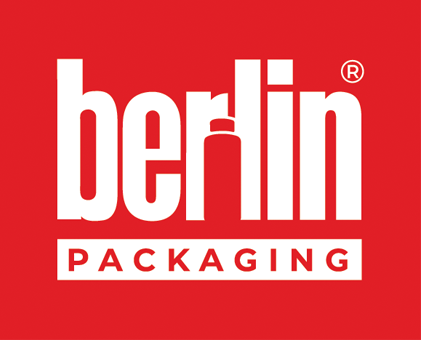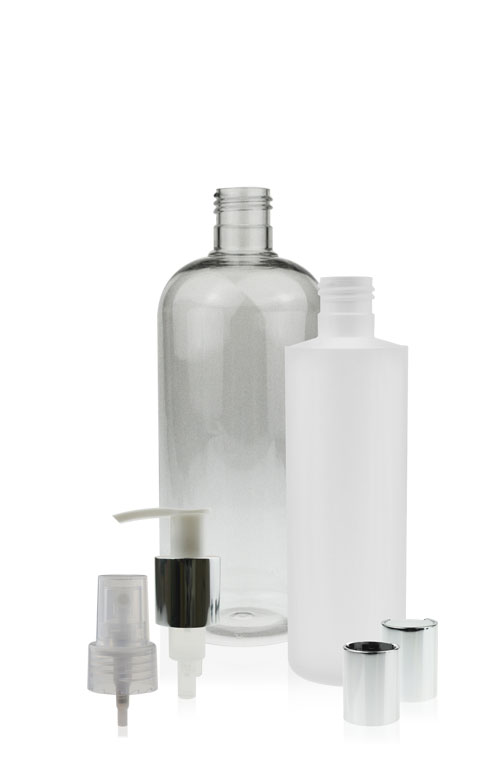QHSE Policy
Berlin Packaging Group is the World’s Largest Hybrid Packaging Supplier® in glass, plastic, metal packaging, and closures, serving a wide range of end-markets: food, beverage, personal care, beauty, OTC, pet vet, pharmaceuticals, industrial, home fragrance and others. In EMEA, Berlin Packaging is present with numerous entities located in various countries.
For the purposes of this Policy, a reference to Berlin Packaging EMEA includes all the companies being directly or indirectly controlled by Berlin Packaging (Europe) S.p.A..
The QHSE policy of Berlin Packaging EMEA (hereinafter, the “Policy”) is based on the following principles:
1. All the processes of the organization will be aimed at fulfilling its targets and achieving its vision of the future. In this regard, the main focus will be on:
• Achieve optimal product quality levels, reducing returns and optimizing costs.
• Innovate in the service, using analysis and improvement tools, including the adoption of new techniques and materials.
• Achieve food-safe products.
• Reduce (and if possible, eliminate) the waste production and reduce the consumption of natural resources and prevent pollution in the execution of all activities.
• Achieve the goal of having zero occupational and environmental accidents.
2. Knowledge and satisfaction of the needs and expectations of all stakeholders, as well as the requirements that products must have, always taking into account food safety, environmental control and occupational risk prevention.
3. All employees of Berlin Packaging EMEA and those who work on its behalf must ensure that they comply with the legal requirements and other requirements that the organization subscribes to in any area of management.
4. Our vision will be supported by the establishment of a Continuous Improvement Plan, which includes objectives and goals that develop the principles established in this Policy.
In order to implement these principles, all companies belonging to Berlin Packaging EMEA undertake to comply with the following guidelines, which are compatible with the context and strategy of the organization.
AS COMPANY:
• Establish, document, maintain and improve a Management System, based on the prevention of product defects, food safety, environmental contamination and occupational risks, based on the requirements of ISO 9001, ISO 14001 and ISO 45001 Standards, on the requirements of applicable legislation and regulations and on the requirements of our customers and other stakeholders, as well as carrying out its industrial activity by applying the most modern techniques and constantly researching to improve its operations and processes.
• Ensure that this Policy is understood and implemented at all levels of the organization, as well as by the people who work on its behalf, and reviewed by the management for its continuous adaptation.
• At each level, awareness will be made of all the requirements, the relevance and importance of the activities carried out and the consequences of not complying with the provisions of the Integrated Management System. Quality, food safety, environmental performance and occupational health and safety emanate from everyone and benefit everyone. Promote internal awareness Campaigns and dedicated training to foster an environmental and safety culture with all employees, as well as with our collaborators and contractors.
• Berlin Packaging EMEA addresses risk management as a priority, workplace health and safety is both an individual and shared responsibility of all managers, supervisors and employees. The management assumes responsibility for the management of quality, food safety, the environment and occupational health and safety and undertakes to provide the necessary technical and human resources. The use of the Best Available Technologies (BATs) allows us to make our activity compatible with the quality of processes and products, food safety, environmental protection and the health and safety of workers.
• An adequate level of motivation in the workplace and fulfilment of professional aspirations will be maintained, resulting in the achievement of objectives and the improvement of activities.
• Monitor and assess quality, environmental and health & safety risks and opportunities.
For Safety
• Provide safe and healthy working conditions to its workers, visitors and guests, for the prevention of injuries and deterioration of health, eliminating hazards and reducing risks to Occupational Health and Safety and compliant with local legislative requirements.
• Strong commitment to do everything reasonably practicable to ensure the health and safety of everyone affected by our operations.
• Develop and implement safe systems of work, providing the appropriate assessment, training and equipment to perform their work safely.
• Ensure staff are appropriately trained so that they can perform their work in a manner that protects the safety of themselves and those affected by their work.
• Ensure the consultation and participation of workers.
For Environment
• Monitor and improve environmental performances and protection, setting medium-long term targets with the final aim to mitigate our main impacts on the environment or improve our performance.
• Improve our companies’ operations, by making our logistics (inbound; outbound and direct) more efficient and working with our partners to reduce our environmental footprint.
• Improve the working-environment in terms of warehouses management, energy efficiency, waste management and people well-being, to ensure a safe working environment including access and egress.
• Implement all measures that will allow us to mitigate our, direct and indirect, impact on the environment, reducing CO2 emissions and waste generated, contributing to the prevention of pollution.
• Be a sustainability enabler for the whole packaging value chain to accelerate business success of the customers, working in partnership with our suppliers.
• Improve our organization to satisfy in every moment our customers.
WITH OUR EMPLOYEES
It is not possible to implement these systems without the commitment of our employees. Employees are responsible for:
• Participating in the implementation of the health and safety, food safety and environmental programs.
• Complying with these programs, to ensure they work in a manner that protects the safety of themselves and those affected by their work.
• Reporting any health and safety, environmental and food safety issues or concerns to management.
WITH OUR CUSTOMERS:
Provide products that comply with all the quality and food safety standards, as well as the customers’ requirements regarding health & safety and environment, and all the applicable legal requirements.
For Environment
• In order to mitigate the environmental impact of the products we provide to our customers, we are committed to push the use of more sustainable packaging products and solutions, providing dedicated advisory services. We can pursue this goal because as world’s largest Hybrid Packaging Supplier®, we are not beholden to a specific material or process, and thanks to the collaboration with our in-house design Studios, we can develop products with comprehensive sustainability attributes to minimize their environmental impact.
• In order to support our customers in achieving their sustainability packaging targets, Berlin Packaging EMEA has developed a strategic sustainability consulting service, based on the C.O.R.E (Circularity, Optimization, Reuse & refill and Environmental Services) approach: – Circularity: creating closed loops, from raw material selection to design for recyclability, working on recyclability and on the use of recycled content and alternative materials (e.g. biobased) – Optimization: improving technical performance and functionality, working on light-weighting; component rationalization; local manufacturing; renewable energy sources and controlled dispensing – Reuse & refill: developing new business models that attract customers and increase sustainability by re-designing for alternative use (reusable packaging; in-house refill systems; on-the-go refill systems and in-store refill systems) – Environmental services: packaging circularity road mapping; providing consumer & market insights; quantitative assessments (LCAs); customer design & innovation and support in our customers’ communication strategies.
WITH OUR SUPPLIERS:
We team up with our suppliers for them to provide us with products that comply with our quality and food safety requirements, as well as to generate shared value along the entire supply chain and to encourage improvements to mitigate the overall environmental impact of their operations and health & safety risks.
For Safety
• We inform our contractors and subcontractors about the safety risks inherent to our facilities and the preventive measures to take, as well as about the environmental rules to follow in our facilities.
For Environment
• We cooperate with our suppliers, contractors, subcontractors and recyclers in a proactive way, with the aim to innovate towards more sustainable products and services, by improving resource efficiency and circularity and by investing to promote traceability along the value chain.
• We work to foster the awareness of our stakeholders (both internal and external) on responsible sourcing and on innovation related to production processes and materials.
• Implement all measures that will allow us to mitigate our direct and indirect impact on environment, reducing CO2, emissions and waste generated, contributing to prevention of pollution.
• Comply with all regulatory requirements and where appropriate, exceed to the requirements of all relevant legislation.
The management of Berlin Packaging EMEA is fully committed for establishing, implementing and maintaining the processes necessary for the development of the Integrated Management System and the needs for improvement, as well as for making staff aware of the importance of the correct execution of their activities in order not to incur deviations from this Policy and reviewing this environmental policy annually and any related business issues at management meetings, in consultation with staff and other key stakeholders.


